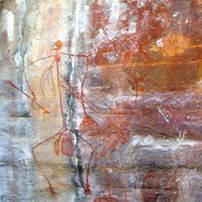Digital Storytelling

Storytelling in the form of patient narratives proved so successful that we decided to build upon it by turning our attention to 'Digital Storytelling'.
The term ‘Digital Storytelling’ has come to mean a number of different things. The approach that we've taken follows that of its founders, the Digital Storytelling Center. Here Digital Storytelling is defined as:
“A workshop process in which small groups come together to share stories and develop them into short multimedia presentations comprising any combination of still images, drawings, short video clips, music and voice.”
Briefing Participants
An Information Sheet was created describing the digital storytelling process, and the intended uses of the stories. Nine members of the NHS Lanarkshire Stroke Managed Clinical Network Patient and Carer group agreed to take part. They were then given a Preparation Sheet to help them think about their stories and the images they might use ahead of the workshop.
The Story Circle
Sitting in a story circle, facilitators and the group of storytellers worked together. Each participant shared their initial story ideas in turn. The workshop was lively and highly interactive, with everyone contributing. The dialogue between group members was an important part of the storytelling process, with connections being made between members that hadn't previously been realised.
Storytelling within the group also created a strong sense of community, with some participants remarking that knowing that another person identified with their own experiences had therapeutic value.
Participatory Production
The story circle was followed by a series of individual sessions to help each storyteller to really think about the point they wanted the story to make and to shape it into a story around 3 minutes long. Ultimately however, each storyteller decided what to say and what to omit.
Another important aspect of the process was the 'participatory production' approach. Unlike traditional film-making, this allowed each storyteller to have control not only over the story script, but also over all editing decisions.
Working with storyboards, storytellers were encouraged to select still images that extended the meaning of the story and to think about the type of music they would like.
All participants received personalised copies of their stories on DVD, describing the important use that had been made of them.
The Story Screening
The story screening was perhaps the most important part of the process. This was a chance for all storytellers to come back together, to see how the stories have developed and to celebrate each other's achievements.
The first three stories created were shown at the Stroke Stories Event held at Glasgow Concert Hall in November 2007. This was a celebration of stroke story work supported by the Big Lottery Fund at local and national level. the event served to formally launch this website and also Living With Stroke - a web module developed by the award-winning DIPEX charity.
The remaining stories were screened at a local event, which was well attended by health and social care providers and managers. You could have heard a pin drop at both events and there were quite a few tears.
Advantages of Digital Stories
Whereas the strength of the traditional patient narrative is the richness of detail provided, the power of the digital story format lies is its brevity and intensity. In today's media-rich world, increasingly people want messages to be appealing, simple and to the point. Digital stories meet these demands.
Using Digital Stories In Health and Social Care
NHS Lanarkshire is one of the first Scottish healthcare communities to implement the digital storytelling approach.
Our work was taken forward with advice and support from Patient Voices. This programme has led the way in introducing the UK health sector to the power of digital stories.
The lessons learned from our experience are now being taken forward through a national project digital storytelling in health and social care. This project is seeking to integrate the digital storytelling process into ongoing efforts to understand the outcomes that matter most to service users and carers as part of the bid to improve individual and community health and wellbeing.
